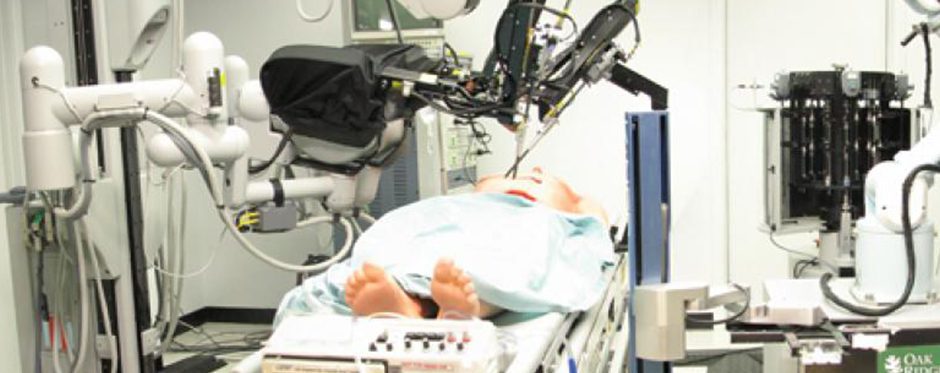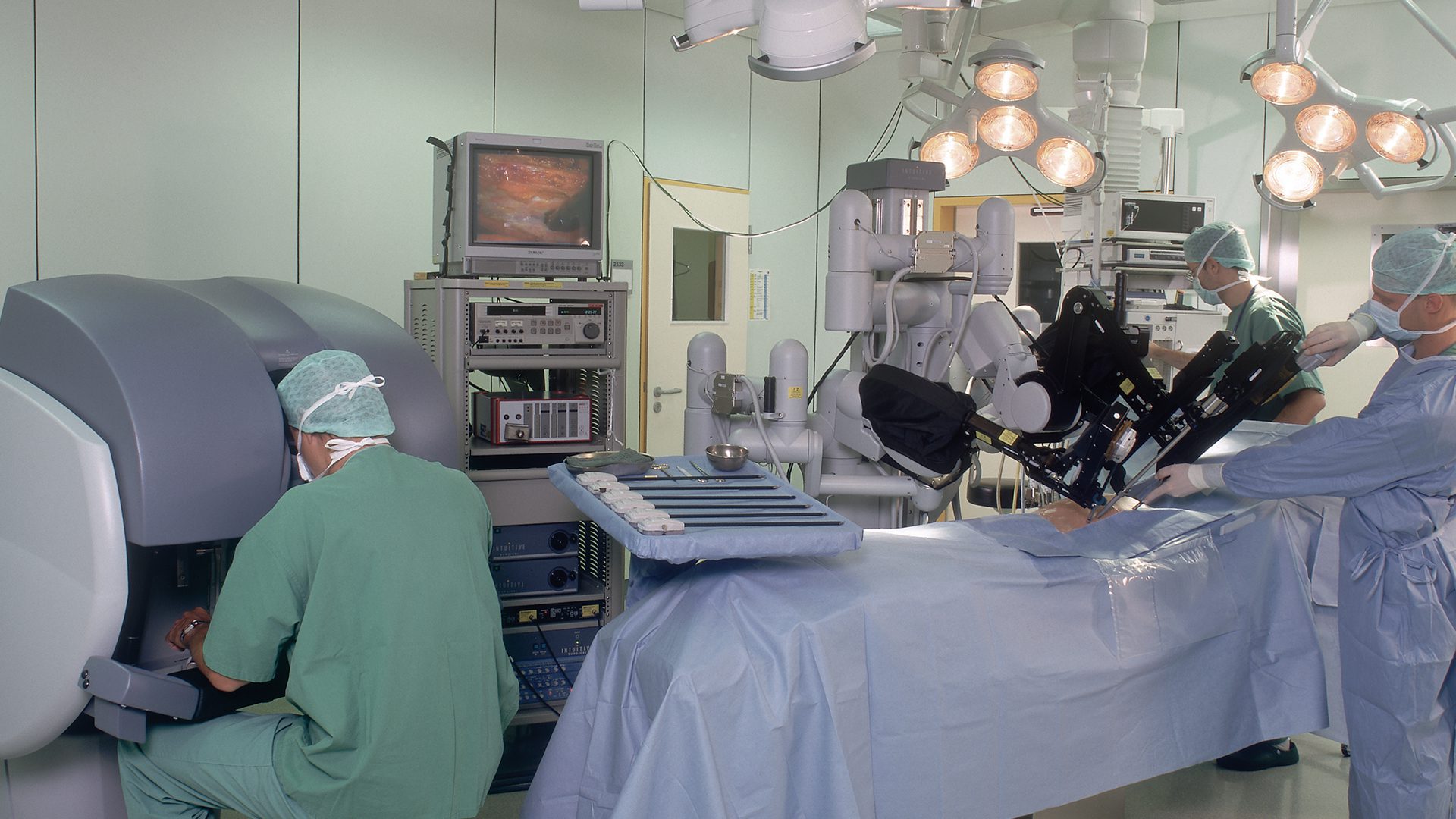Developing robotic surgery technology that delivers emergency medical care, anywhere on the globe.
THE CHALLENGE & GOAL
Providing lifesaving surgical care to the wounded within the “golden hour” after injury is critical to their survival, yet combat medics have neither the equipment nor training to deliver such assistance. The only choice has been to evacuate the wounded to a combat support hospital as quickly as possible. What if it were possible to project the skill and judgement of a trauma surgeon anywhere on earth? What if life-saving surgery could be performed while enroute to the hospital?
THE SOLUTION
In the 1980’s SRI International developed the world’s first telepresence surgery technology in the pursuit of saving lives on the battlefield, in rural underserved regions, and for astronauts in space. As the technology evolved, it was commercialized into the da Vinci Surgical System, focusing on conducting advanced minimally invasive surgical procedures instead of traumatic injury. Since then, SRI has continued to work with the Defense Advanced Research Projects Agency (DARPA) and the US Army to develop the next generation of battlefield “trauma pods.”

Although society has seen numerous advances in modern medicine, delivering timely care in combat environments remains a formidable challenge.
SRI had already shown it was possible to perform effective remote surgery, but if robot surgeons were ever to make it into the combat zone, they would need assistance from a robotic operating room team. To show a robotic surgery could be performed with the patient being the only human in the operating room, the U.S. Defense Advanced Research Projects Agency (DARPA) selected SRI to lead the Trauma Pod project — an effort to demonstrate the potential of battlefield trauma care systems controlled by a surgeon miles away from the front lines.
Building on the success of the da Vinci Surgical System, SRI and its partners developed a robotic surgery solution that:
- Captured 3D patient scans and vital signs
- Viewed simulated CT images to diagnose the injury
- Sutured a simulated bowel section
- Placed a shunt in the groin of the simulated patient
- Created a comprehensive record of the procedure
In testing, a surgeon was able to perform critical tasks with 100% accuracy, using spoken commands and gestures to direct a robot to change tools and present supplies to the surgical robot — in a manner modeled on how nurses and technicians assist in a traditional operating room.
The Trauma Pod project, led by SRI, has the potential to enable doctors to deliver lifesaving medical and surgical care in extreme environments such as outer space, or for people in remote settings.



